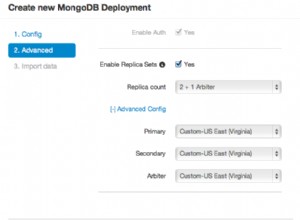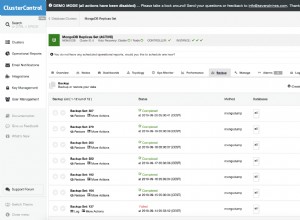Supponendo la tua Question collection ha il seguente schema (semplificato per brevità):
QuestionSchema = new SimpleSchema({
title: {
type: String,
label: "Question"
},
category: {
type: String,
label: "Category"
}
});
e la tua Answer collezione ha
AnswerSchema = new SimpleSchema({
text: {
type: String,
label: "Question"
},
author: {
type: String,
label: "Author"
}
question: {
type: String,
label: "Question"
}
});
Puoi farlo creando due modelli di supporto in cui il primo restituisce solo una matrice di documenti di domanda e il secondo prende un singolo ID domanda come parametro e restituisce un cursore di tutte le risposte con quell'ID domanda:
Template.questions.helpers({
questions: function(){
return Question.find({}).fetch();
},
answers: function(questionId){
return Answer.find({question: questionId}).fetch();
}
});
Successivamente il modello necessita di {{#each}} annidato blocchi con il primo che itera sull'array di domande e passa le risposte al successivo ciascuno come parametro dell'helper successivo.
<template name="questions">
{{#each questions}}
<h1>{{this.title}}</h1>
<ol>
{{#each answers this._id}}
<li>{{text}}</li>
{{/each}}
</ol>
{{/each}}
</template>




